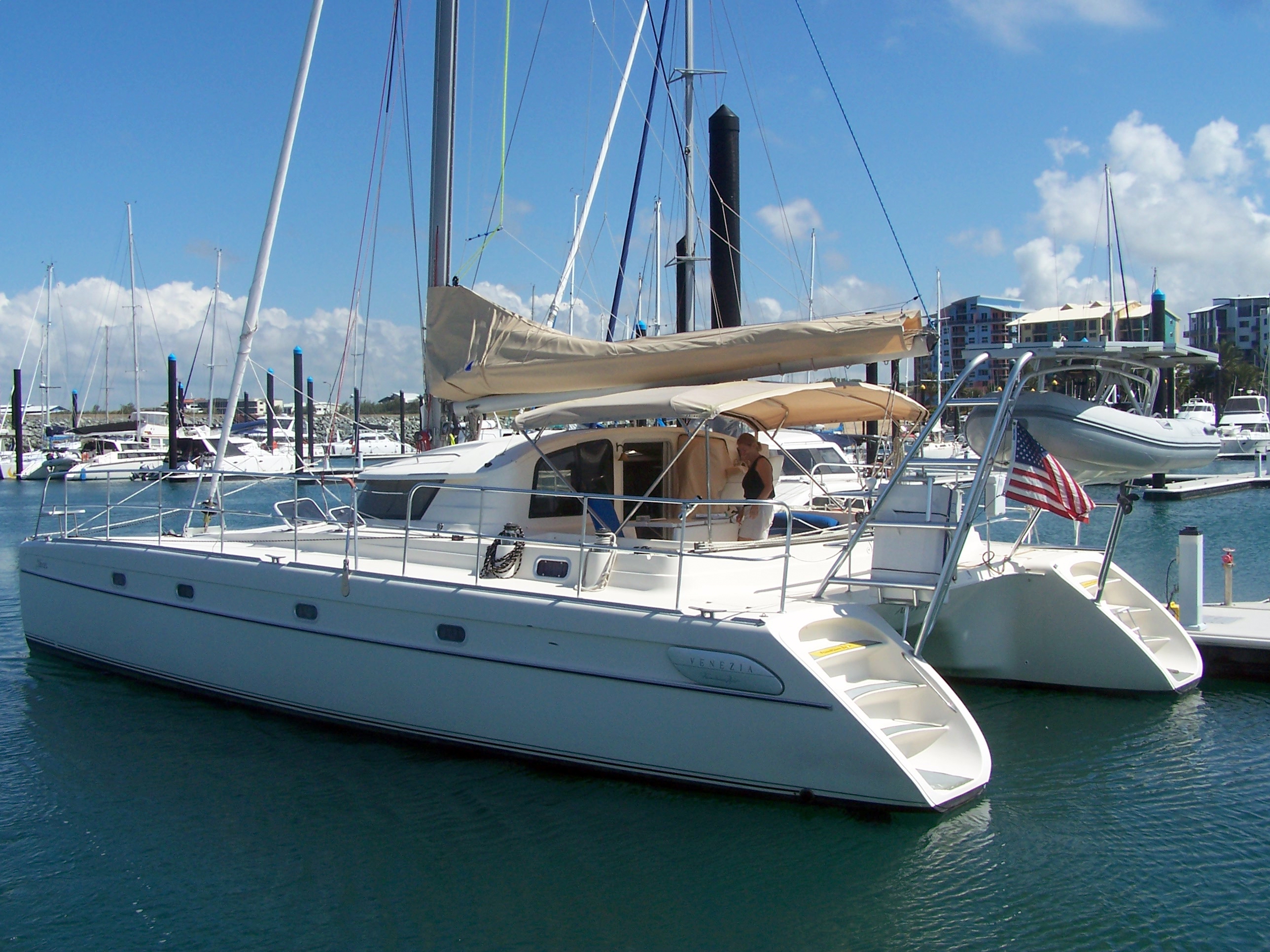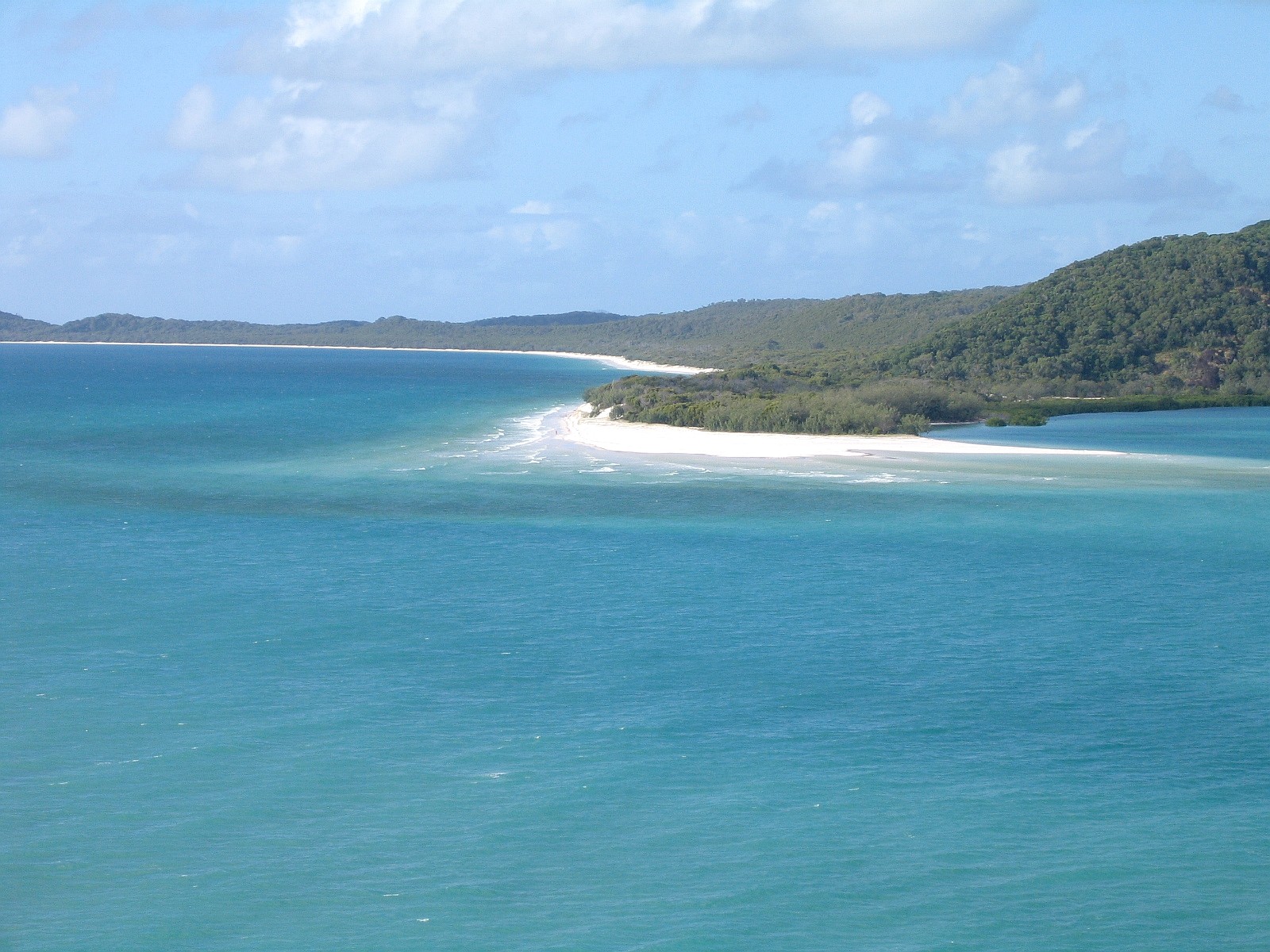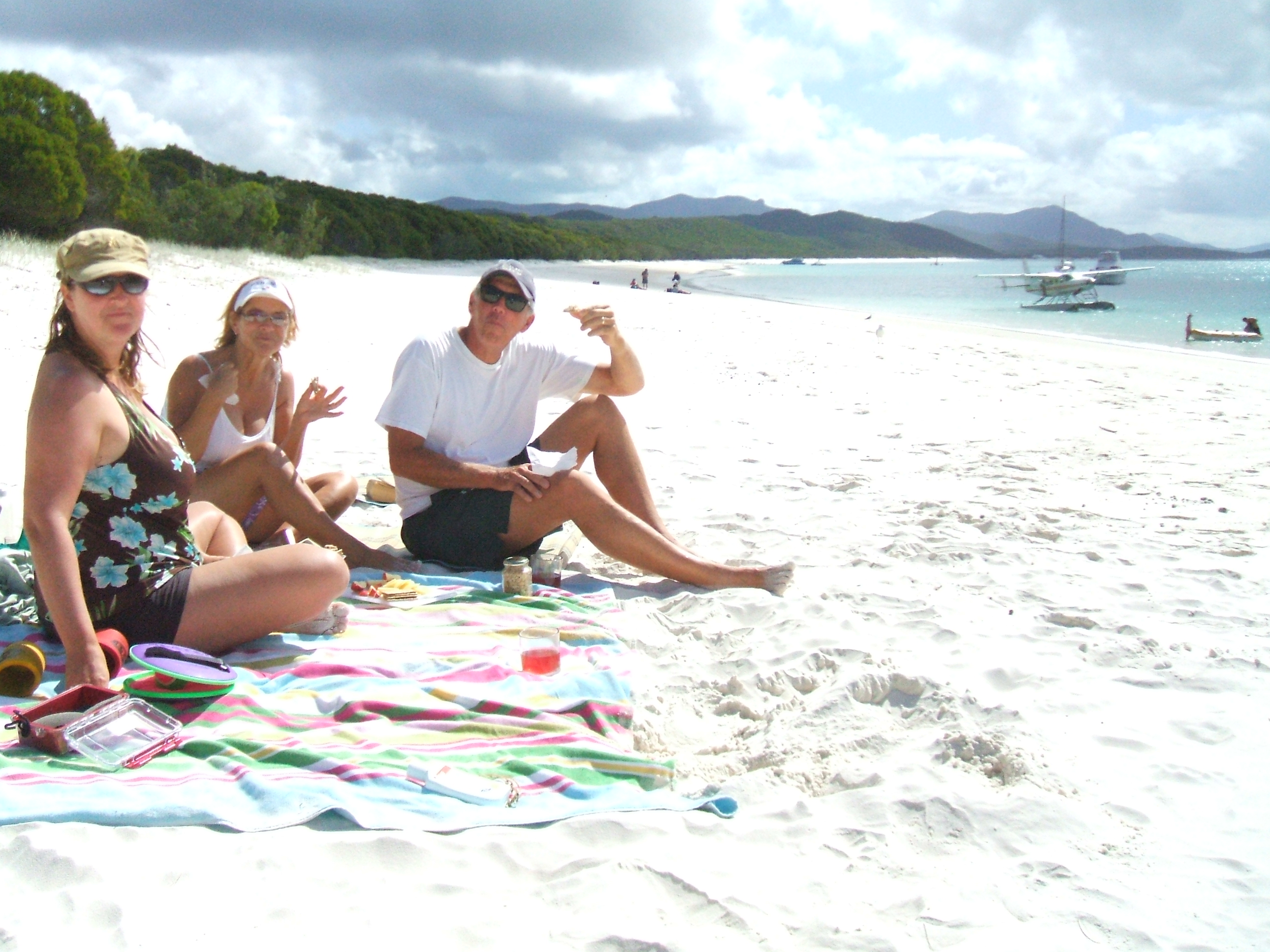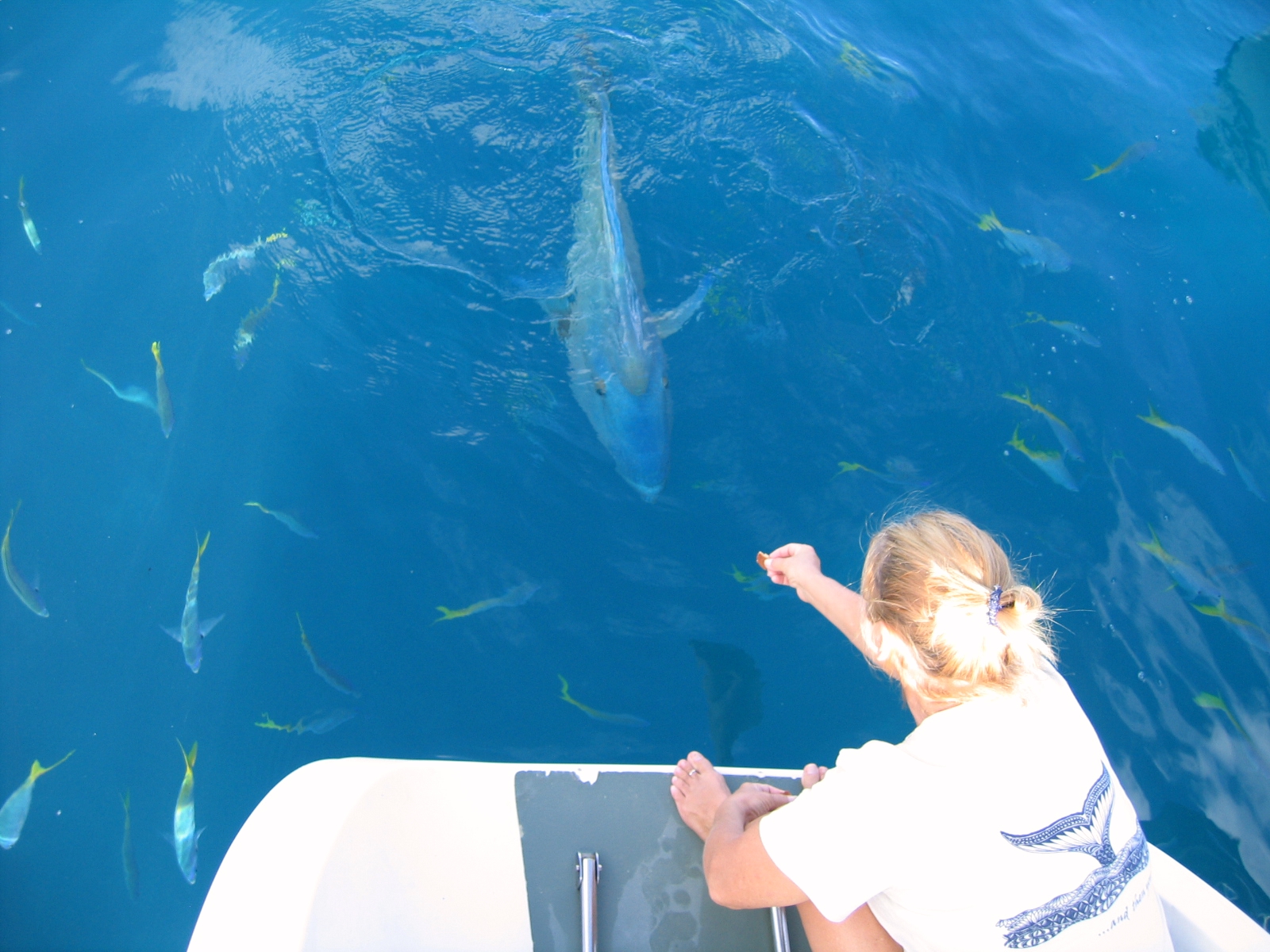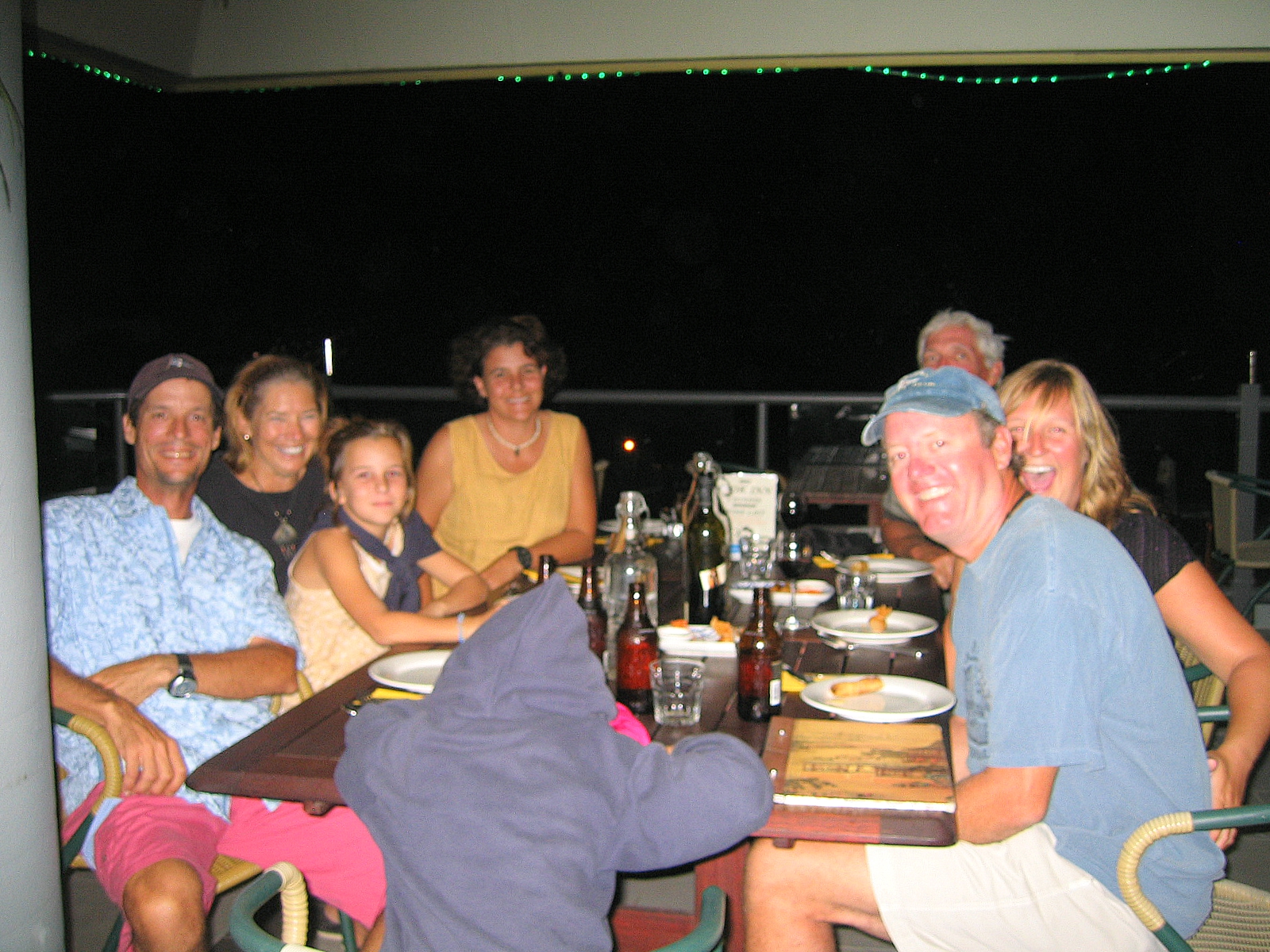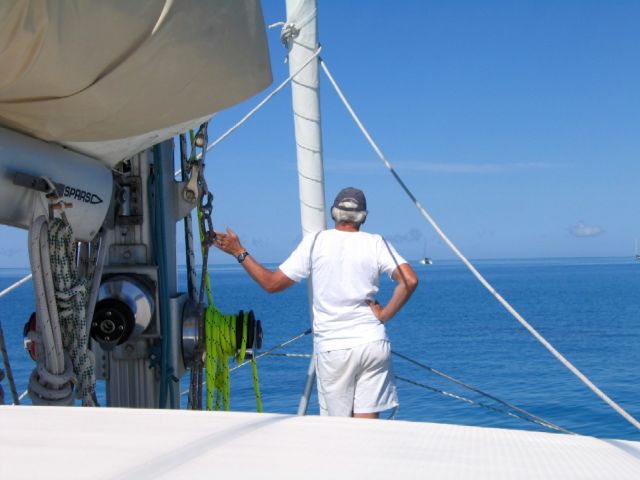|
| |||||||||||||||
| |||||||||||||||
|
27 May, 2007
Whitsundays, Australia
Penˇteˇcost [pént? kňst] n 1. christianity Christian celebration: a Christian festival celebrated on the seventh Sunday after Easter that commemorates the descent of the Holy Spirit upon the apostles. Also called Whitsunday U.K. term Whit Sunday
We were going to Mackay to check out the vibration in our starboard sail drive and I thought it would be a good idea to jump in the water at the marina and remove the feathering prop and affix a standard propeller to see if that might be the source of the vibration. But the locals convinced me that there were "croc's in these waters". From here north the rivers and estuaries have a growing population of crocodiles, an endangered species in Australia. The further north the more crocs and there have been incidences where crocodiles have come out of the water to grab a dinghy or at least we have been told. "Stingers" (small lethal jellyfish) inhabit the oceans , at least for a few more weeks, so for now we can't go swimming or change the prop.
The Mackay
When we left Mackay we went up the Cumberland Channel and anchored for the night at Goldsmith Island. We pulled in around four in the afternoon and the sun was still high enough to enable us to see the reef which extends a good ways from shore. There was one other sailboat in the anchorage and a couple of tents on shore where people were camping out. Most of the islands, though uninhabited, are in a national park and have extensive walking trails. The next morning we pulled anchor and headed north with no particular destination in mind. The beauty of the islands and their close proximity to each other makes the Whitsundays the ideal cruising/chartering grounds. With islands being only miles away from each other we had several options. But as the wind began to pick up out of the southeast we decided to make Lindeman Island, Boat Port, our anchorage for the night. Here we stayed for two days waiting on the weather to clear up and the winds to calm down. There are also extensive walking trails on the island of Lindeman but the weather did not permit us to go to shore. Funny how we keep missing these walking trails. The winds persisted but we felt that we had a little break the third morning so we left for Whitsunday Island, only about 10 miles away. The most direct route to White Haven Beach from Lindeman is through the Solway Passage, a narrow passage that barely separates Haslewood Island and the Whitsunday Island. The seas were predicted to be three meters despite the "protection" that one gets from being behind the Great Barrier Reef. Even with this protection (?) nine foot waves are still nine foot waves and we took a couple of them over the bimini and into the cockpit, something that we rarely do. Once through the passage, however, things quietened down. We anchored in White Haven Beach just as the skies opened and washed most of the salt from Shiraz. The next morning we first heard and then saw a seaplane land just a short distance from us and then Fanta Sea brought her one hundred plus passengers and then the tourists boats just kept on coming in despite the rain and thirty knot winds. The boats loaded with tourist leave around 2:00 pm and at the end of the day we were one of two boats left in the anchorage. We were visited by Julie and Peter aboard Adagio who stopped by to say hello and the next morning we went over to take a look at their boat and some software that we were interested in getting before heading to Thailand. That evening Peter, Julie and their guest came over to Shiraz for drinks, appetizers, and a wonderful time, even though it continually peppered rain outside. Their guests work in the educational system of Australia and live in the Snowy Mountains. They were quite interesting folks to talk with.
The Whitsunday Islands are more commonly known as the Cumberland Group and are in fact drowned mountains, cut off from the mainland when the last great thaw began about ten thousand years ago. In June 1770, Captain James Cook made passage between the mainland and a group of islands which he noted had an abundance of safe anchorages. He named the islands after the day he entered them, Whitsunday. Captain Cook was pretty good about giving descriptive names to landmarks i.e. Cape Tribulation, Thirsty Sound, Isle of Direction, Wednesday and Thursday Island
The Whitsunday Islands are uninhabited except for a few that have luxury resorts with swimming pools and nice restaurants. There are also a number of yacht charter companies that operate in the area. For entertainment we dial in to VHF 81 and listen to the boats call in reporting nightly positions and problems they may be having with the boat. It is protocol when calling the charter company to repeat your boat name three times. So this is the way it goes for one boat out there named Awesome. "Whitsunday base....This is Awesome, This is Awesome, This is Awesome". And so far we concur. These islands are pretty awesome. We could go on and on about the hours of entertainment given to us by these vacationers and how they reminded us of some of the bonehead things we did when we first took off. Here are just a couple examples:
:Our tender is taking on water. What's the deal? :Please check the plug in the back and make sure it is in place. (no further reply)
:We turned off all the systems and there is still copious amounts of water coming out of the port hull. And it sounds like a bilge pump may be going off. :Er, that would be your refrigerator. :Oh yea, I thought so.
:We have the line of the dinghy wrapped around the propeller of the boat and can't get it off, mate. :We'll be out in the morning to give you a hand.
And of course the never ending complaints about the head being plugged.
So here we are behind the Great Barrier Reef, the earth's largest World Heritage Area. Of the five hundred or so sites on the planet that qualify for World Heritage status (that is, a site of global historical or biological significance), only thirteen satisfy all four of UNESCO's criteria for listing, and of these special thirteen places almost a third are to be found in Australia.
The Great Barrier Reef ecosystem is not one long continuous reef, even though the name implies this, but a complex system of various marine habitats including 2900 reefs, 600 continental islands, and 300 coral cays. It is the largest natural feature on earth, stretching more than 2300 km along the coast of Australia. A plethora of sea life make their home in the GBR including 1,500 varieties of fish, 360 species of hard coral and one third of the world's soft coral. Also 22 species of seabirds, approximately 14 thousand dugong, 30 species of whales and dolphins, and 6 species of marine turtles. If you have the time visit www.reefed.edu.au for more information on the Great Barrier Reef, along with more than 1500 images and videos.
The weather finally improved and we met Tom and Amy in Tongue Bay where at high tide we landed our dinghy and walked to the overlook and to the beach of Hills Inlet. This offers a spectacular view of Whitehaven. At low tide Hills Inlet dries out almost completely and then you have this beautiful bay of white silica sand. That same afternoon we motored back to White Haven Beach to anchor for the night and the next day had a picnic on the beach before heading to a different anchorage for the night. Ready for some snorkeling, we sailed to Hook Island, Butterfly Bay, and a grabbed a mooring ball.
A few days later we were on our way to Bait Reef, only 16 miles away. We had been talking about signing on for a trip to Bait Reef leaving from the mainland once we got to Airlie. But Peter and Julie on Adagio recommended that we take our own boat to the reef and maybe spend a couple of days there. So we decided to act on their suggestion and left early in the morning for the reef in hopes that we would arrive before all the other tourists and secure a mooring ball. We arrived at 10:00 am and the only other boat in sight was a large tender where Park Rangers were diving the mooring balls to make sure they were securely attached. Tom and Amy on S/V Sandpiper came with us, leaving their boat attached to a mooring ball in Butterfly Bay. We had a great time with some
Blue Pearl Bay is noted for it's great snorkeling and diving opportunities. With very little wind we motored the five miles and were fortunate to still have a couple of mooring balls available when we arrived. You are allowed to anchor in the bay but you should anchor behind the reef markers and in fairly deep water to avoid damaging the coral (and your chain). Although the water wasn't that clear, the snorkeling was nice. We spotted a three foot clam the largest we have seen so far.
We are now sitting in Airlie which is a small town on the mainland filled with young backpackers and tourists. We were excited to once again meet up with the S/V Blue Sky and had dinner together several nights.
Airlie also has a new marina but for our boat it was going to be over $100 a night, not very catamaran friendly. So we are anchored along with about 100 other boats in the bay immediately in front of the city. Airlie is full of bars, restaurants, internet cafes, and souvenir shops. Just your typical tourist town. But it is nice to have access to the internet and to be able to go in for dinner. It also has a small manmade lagoon for swimming which is very nice.
We will be leaving Airlie and the Whitsunday Islands as soon as the wind lets up a little, our next stop in Cairnes. We're headed to Cooktown for the annual reenactment of Cooks landing the second weekend of June. We understand it should be a quite a party!
So for now with regret but the need to be in Darwin by early July, we will be leaving the Whitsunday Islands.
For more pictures on our trip through the Whitsunday Islands just click on the arrow below.
| |||||||||||||||

